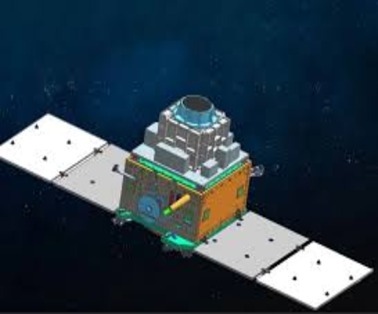The Indian Space Research Organisation is collaborating with the Raman Research Institute (RRI), Bengaluru, an autonomous research institute, to build the X-Ray Polarimeter Satellite (XPoSat) that is scheduled to be launched later this year.
What is XPoSat?
- XPoSat will study various dynamics of bright astronomical X-ray sources in extreme conditions.
- It has been billed as India’s first, and only the world’s second polarimetry mission that is meant to study various dynamics of bright astronomical X-ray sources in extreme conditions.
- The other such major mission is NASA’s Imaging X-ray Polarimetry Explorer (IXPE) that was launched in 2021.
- IXPE carries three state-of-the-art space telescopes. Each of the three identical telescopes hosts one light-weight X-ray mirror and one detector unit.
- Testing for XPoSat is nearing completion, and the mission is in its advanced stages and is scheduled to be launched sometime in the year 2023.
Features Of XPoSat
- The spacecraft will carry two scientific payloads in a low earth orbit.
- The primary payload POLIX (Polarimeter Instrument in X-rays) will measure the polarimetry parameters (degree and angle of polarization) in medium X-ray energy range of 8-30 keV photons of astronomical origin.
- The XSPECT (X-ray Spectroscopy and Timing) payload will give spectroscopic information in the energy range of 0.8-15 keV.
- POLIX is expected to observe about 40 bright astronomical sources of different categories during the planned lifetime of XPoSat mission of about 5 years.
- This is the first payload in the medium X-ray energy band dedicated for polarimetry measurements.
- The XSPECT (X-ray Spectroscopy and Timing) payload will give spectroscopic information (on how light is absorbed and emitted by objects).
- It would observe several types of sources, such as X-ray pulsars, blackhole binaries, low-magnetic field neutron star, etc.
Significance Of XPoSat
- The emission mechanism from various astronomical sources such as blackhole, neutron stars, active galactic nuclei, pulsar wind nebulae etc. originates from complex physical processes and are challenging to understand.
- The polarimetry measurements add two more dimension to our understanding, the degree of polarization and the angle of polarization and thus is an excellent diagnostic tool to understand the emission processes from astronomical sources.
- The polarimetric observations along with spectroscopic measurements are expected to break the degeneracy of various theoretical models of astronomical emission processes.
- By measuring the polarisation of these X-rays, we can study where the light came from and understand the geometry and inner workings of the light source
ISRO

Objectives Of ISRO
- Operational flights of Polar Satellite Launch Vehicle ( PSLV), Geo-synchronous Satellite Launch Vehicle (GSLV) and Small Satellite Launch Vehicle (SSLV)
- Design and development of New Space Transportation solutions
- Design, Development and Realization of Communication Satellites
- Design, Development and Realization of Earth Observation Satellites.
- Development of Navigation Satellite Systems
- Development of satellites for Space Science and Planetary Exploration
- Earth Observation Applications
- Space based systems for Societal Applications
- Advanced Technologies and newer initiatives
- Training, Capacity building and Education
- Promotion of Space technology
- Infrastructure / Facility Development for space research
- International Cooperation
- Commercial utilisiation of the products and services emanating from the Indian space programme
- Promotion & Authorisation of Indian private firms in Space sector
To Download Monthly Current Affairs PDF Click here
Get Inspiration from CLAT 2025 Topper
Click here to get a free demo
Everything About CLAT 2025



